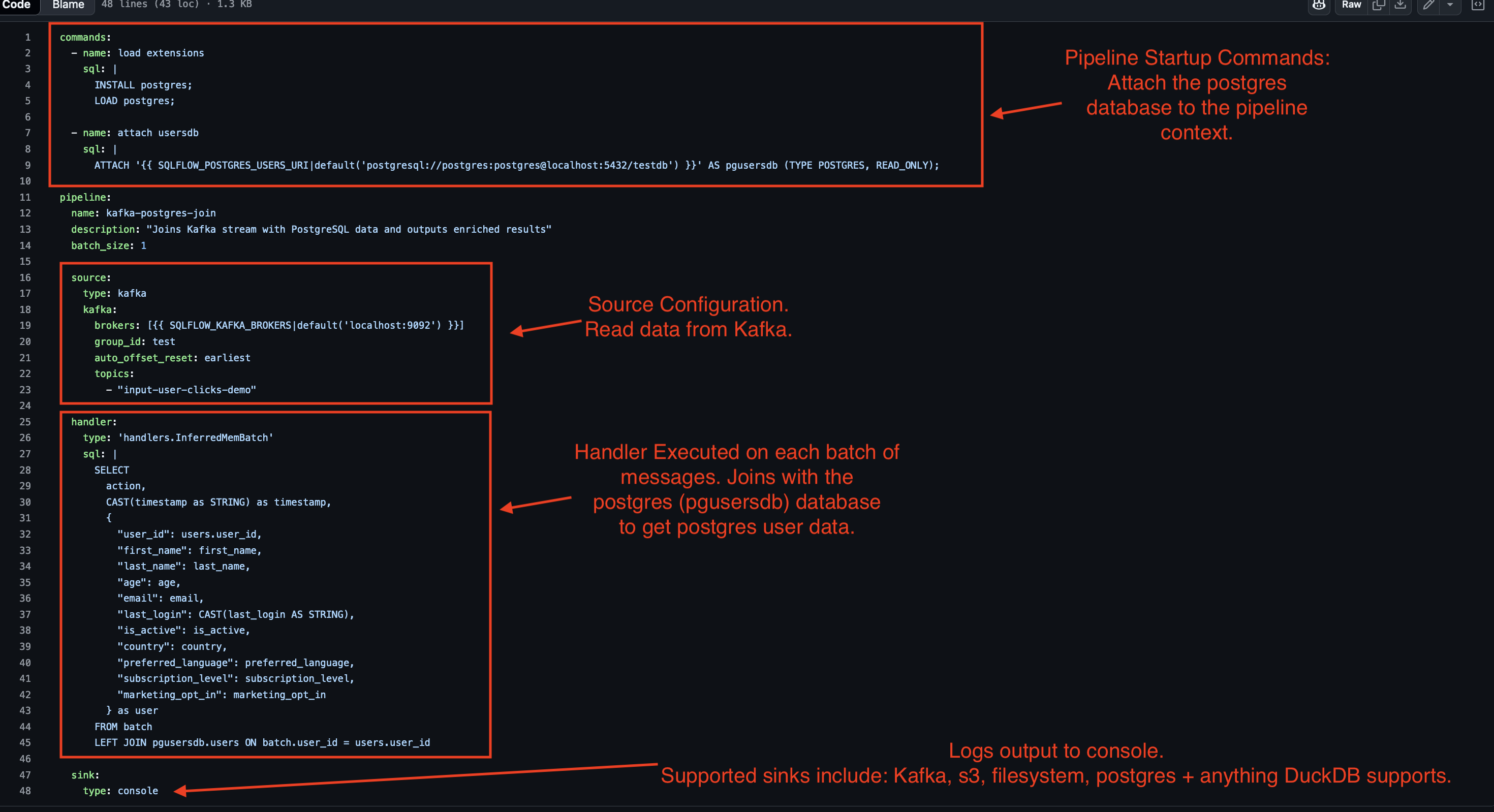Basics
SQLFlow is a high-performance stream processing engine that simplifies building data pipelines. SQLFlow pipelines are built using SQL. Think of SQLFLow as a lightweight, modern Flink. SQLFLow embeds DuckDB and Apache Arrow for high performance stream processing. SQLFlow can process 10's of thousands of events per second using only 100's of MiB of memory.
Why SQLFlow?
SQLFlow is a modern, lightweight stream processor based on DuckDB. We want to enable cost-effective stream processing at scale. The current wave of enterprise stream processing tools are built on the JVM. While JVM based tools are proven at scale, they carry a considerable learning curve and are expensive to run. SQLFlow wants to make it simple, reliable, cost effective and performant to run stream processing at scale.
Core Components

DuckDB
DuckDB is the core of SQLFlow. Every SQL statement inside of SQLFlow is executed using DuckDB. This means that the DuckDB SQL dialect should be used. Any statement that DuckDB Supports is also supported by SQLFlow.
Input Source
SQLFlow ingests data from a variety of input sources, including Kafka, and Webhooks. SQLFlow models the input as a stream of data.
Handler
The handler specifies the SQL to execute. SQLFlow supports disk-based or in-memory handlers for tunable durability. SQLFlow uses DuckDB and Apache Arrow to execute SQL against the input source. Handlers contain the stream processing logica, filter, aggregate, enrich or drop data.
Output Sink
SQLFlow writes the results of the SQL to output sources including: Kafka, Postgres, Filesystem, Blob Storage.
The following image shows an example SQLFlow configuration file:

The file explicitly contains a pipeline configuration with a source, handler and sink section. This configuration file also contains commands to be executed prior to the pipeline running. These commands support things like attaching databases to the pipeline execution context.
SQLFlow Process
The SQLFlow process is a daemon that reads data from the input source, executes the SQL against the data and writes the output to the output sink. The SQLFlow process continuously runs until stopped. SQLFlow ships with logging and metrics to make the process easy to monitor.